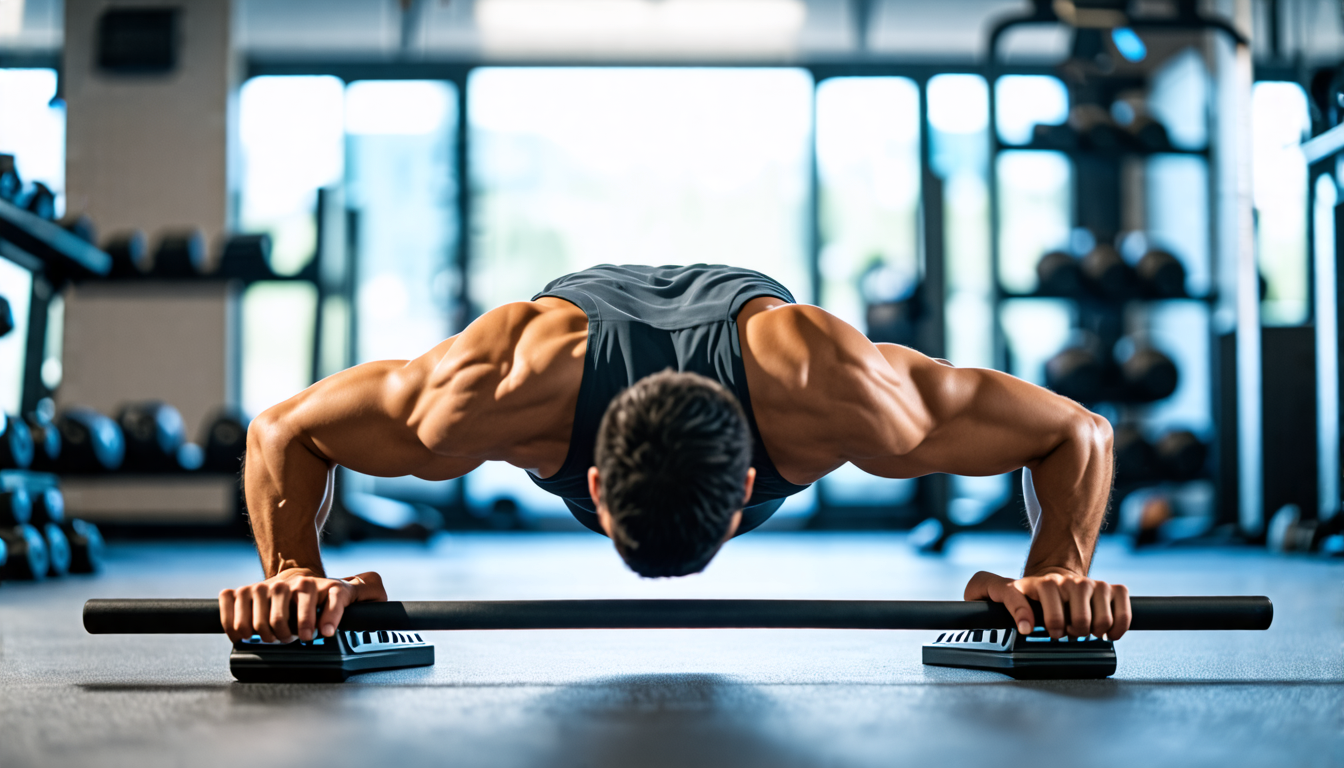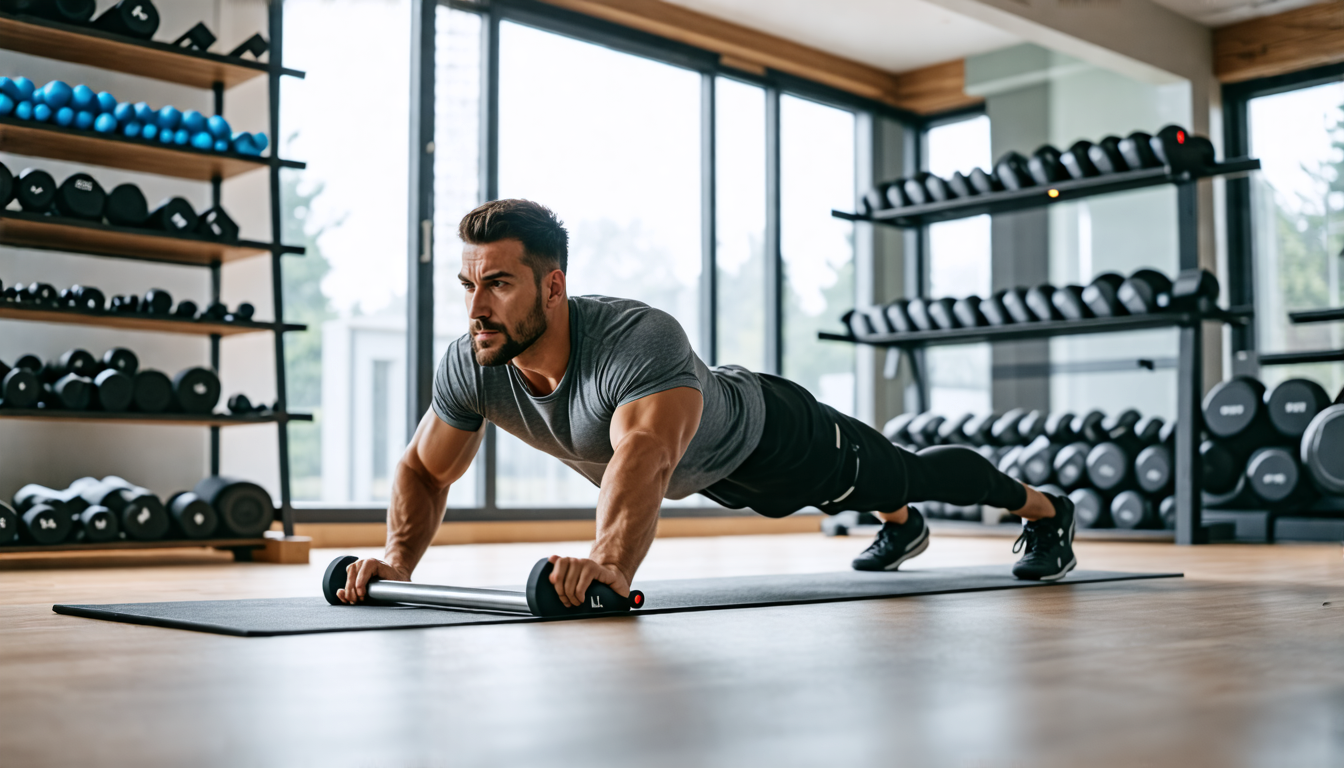Push-ups are a quintessential bodyweight exercise revered for their ability to build upper body strength and improve overall fitness. While the traditional push-up requires nothing more than a flat surface, fitness enthusiasts are increasingly turning to innovative methods to elevate their workouts. One such method involves the use of a fitness bar, a versatile tool that can amplify the benefits of your push-up routine.
Incorporating a fitness bar into your push-ups can add a dynamic edge to the exercise, offering enhanced stability, greater muscle engagement, and the potential for increased range of motion. Unlike standard push-ups, which primarily target the chest, shoulders, and triceps, push-ups with a fitness bar also engage the wrists and forearms more comprehensively. This not only diversifies your workout but also builds functional strength that can translate to improved performance in various activities.
As home fitness continues to gain popularity, the fitness bar emerges as an indispensable piece of equipment, making it easier for at-home athletes to diversify their routines without the need for extensive gear. Whether you’re a seasoned fitness enthusiast or just starting your journey, learning how to perform push-ups with a fitness bar correctly can provide significant benefits and elevate the quality of your workouts.
Introduction to Push-Ups with a Fitness Bar
Push-ups are a staple in many home workout routines, known for building upper body strength, improving core stability, and being incredibly versatile. However, if you’re interested in maximizing the effectiveness of your home fitness workouts, incorporating a fitness bar can introduce new dynamics and challenge different muscle groups.
Overview of Traditional Push-Ups vs. Push-Ups with a Fitness Bar
Traditional push-ups are typically performed with your hands placed flat on the floor, shoulder-width apart. The exercise involves lowering your body until your chest nearly touches the ground and then pushing back up to the starting position. This classic move targets the pectorals, triceps, and shoulders while also engaging the core.
In contrast, push-ups with a fitness bar (also known as push-up bars or handles) slightly alter the dynamics of the exercise. The fitness bar elevates your hands off the ground, offering an increased range of motion. This increased range allows for a deeper push-up, engaging muscles more intensively. Push-up bars generally reduce the strain on your wrists and distribute your weight more evenly, which can be particularly beneficial for individuals with wrist pain or discomfort.
Benefits of Incorporating a Fitness Bar into Push-Up Routines
There are several benefits to using a fitness bar for push-ups, making it a valuable addition to your home fitness equipment. Here are some of the key advantages:
- Increased Range of Motion: The elevation provided by push-up bars allows you to lower your body further than a traditional push-up would, promoting greater muscle activation. This can lead to better strength gains and muscle development.
- Reduced Wrist Strain: Performing push-ups with your wrists in a neutral position, as enabled by the fitness bar, minimizes the stress on your wrists. This can be especially important for those who experience discomfort performing regular push-ups directly on the floor.
- Enhanced Stability: The additional height and grip provided by the fitness bar help enhance stability and balance during the exercise. This can lead to improved form and reduced risk of injury.
- Versatility: Fitness bars can be used for more than just push-ups. They can be integrated into various other exercises like mountain climbers, knee tucks, and dips, making them a versatile addition to any home gym.
- Better Core Engagement: The instability created by push-up bars means that your core has to work harder to stabilize your body. This results in a more comprehensive workout that targets both the upper body and core muscles.
- Portability: One of the great advantages of fitness bars is their portability. They are compact and lightweight, making them easy to transport and store when not in use.
In summary, incorporating a fitness bar into your push-up routine can provide significant benefits, making your workout more effective, safer, and versatile. Whether you’re looking to increase muscle activation, reduce wrist strain, or add stability to your exercises, a fitness bar can be a valuable tool in enhancing your home fitness regimen.

How to Perform Push-Ups with a Fitness Bar Correctly
Performing push-ups with a fitness bar can significantly elevate your home fitness routine by adding complexity and variety. These specialized push-ups engage different muscle groups and enhance stability. However, it’s crucial to execute them correctly to maximize benefits and avoid injury. This guide will provide you with a step-by-step approach to performing push-ups with a fitness bar correctly, along with common mistakes to avoid and essential safety tips.
Step-by-Step Guide to Executing Push-Ups with a Fitness Bar
Step 1: Positioning the Fitness Bar
Begin by selecting a stable and sturdy fitness bar. Place the bar on the floor, ensuring that it is aligned properly and doesn’t roll. Ideally, use a bar designed for home fitness that comes with non-slip features. Position the bar at a width that aligns with your shoulders.
Step 2: Setting Up Your Stance
Stand behind the bar, and place your hands on it, positioning them slightly wider than shoulder-width apart. Make sure your fingers are wrapped around the bar firmly. Extend your legs behind you so that you are in a plank position, with your body forming a straight line from head to heels. Your feet should be together or slightly apart depending on what feels more stable for you.
Step 3: Adjusting Your Body Alignment
Ensure that your core is engaged by tightening your abdominal muscles. Keep your back flat, and make sure your hips are neither sagging downwards nor sticking upwards. Your head should be in a neutral position, looking slightly ahead rather than down to maximize alignment and balance.
Step 4: Lowering Your Body
Begin to lower your body by bending your elbows, keeping them close to your torso. Aim to bring your chest just above the bar. Focus on maintaining a straight body line and controlled movement. Go as low as you comfortably can, without compromising your form.
Step 5: Pushing Back Up
Once you’ve reached the lowest point, push your body back up to the starting position by straightening your arms. Make sure to do this in a controlled manner to avoid jerky movements. Exhale as you push up and inhale as you lower down.
Step 6: Repetition and Sets
Repeat the lowering and pushing motion for the desired number of repetitions. A common beginner set is 3 sets of 10-15 repetitions. As you become more comfortable with the movement, you can increase the number of sets and repetitions to continue challenging your muscles.
Common Mistakes to Avoid
Mistake 1: Improper Hand Placement
If your hands are too close or too wide apart, you risk putting unnecessary stress on your wrists and shoulders. Make sure to align your hands with your shoulders and check your grip periodically.
Mistake 2: Sagging Hips
Allowing your hips to sag downwards compromises your core engagement and can lead to lower back strain. Always keep your core tight and hips aligned with your body.
Mistake 3: Flaring Elbows
Your elbows should stay close to your body as you lower and push up. Flaring them out too much can place undue stress on your shoulder joints and reduce the effectiveness of the exercise.
Mistake 4: Partial Range of Motion
Lowering your body only halfway or not pushing back up completely can limit your muscle engagement and growth. Ensure you are completing the full range of motion for each repetition.
Mistake 5: Uneven Pace
Avoid rushing through the motions or pausing too long between repetitions. A steady and controlled pace maximizes muscle engagement and minimizes the risk of injury.
Safety Tips for Optimal Performance
Warm-Up
Always start with a warm-up to prepare your muscles and joints for the workout. A dynamic warm-up that includes arm circles, shoulder stretches, and light cardio can increase blood flow and reduce the risk of injury.
Use a Stable Surface
Make sure the fitness bar is placed on a non-slip surface to prevent it from rolling or moving during the exercise. If you’re working out at home, using a workout mat can provide additional stability.
Listen to Your Body
Pay attention to how your body feels while performing the exercise. If you experience any pain or discomfort in your wrists, shoulders, or back, stop immediately and reassess your form. Consult a fitness professional if necessary.
Start Slow
If you are new to using a fitness bar for push-ups, start with fewer repetitions and sets to allow your body to adapt to the new movement. Gradually increase the intensity as you gain strength and confidence.
Cool Down and Stretch
Finish your workout with a cool-down session that includes stretching your arms, shoulders, chest, and back. This promotes muscle recovery and reduces soreness.
Incorporating a fitness bar into your push-up routine can bring impressive gains to your home fitness regimen. By following these guidelines and avoiding common pitfalls, you can perform push-ups with a fitness bar safely and effectively.
In conclusion, integrating a fitness bar into your push-up routine can offer substantial benefits, such as enhanced muscle engagement, improved grip, and a greater range of motion. By following a step-by-step guide to performing push-ups with a fitness bar, you can elevate your home fitness routines safely and effectively. Remember to avoid common mistakes such as improper hand placement or arching your back to prevent injury and maximize results. As with any exercise, consistency and proper form are key to reaping the full rewards. Whether you’re a fitness enthusiast or just starting your journey, adding a fitness bar to your push-ups can diversify your workout regimen and help you achieve your fitness goals from the comfort of home.

